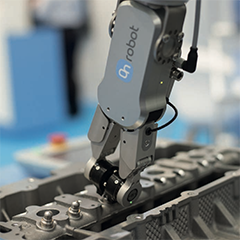Fears that automation will lead to mass unemployment are a recurring social and economic issue. In recent decades, these fears have been fed by the rapid spread of industrial robots, the use of which has become prevalent in the wind industry. While robotization within the industry has many positive aspects, such as carrying out the notoriously dangerous ‘blade walks’ on offshore wind turbines, the threat of technology replacing jobs is ever present.
The International Federation of Robotics (IFR) confirms the steep rise in the use of robots and automation. Sales of professional service robots increased by 32% to USD11.2 billion worldwide in 2018-2019. And, says the IFR, the Covid-19 pandemic is set to further boost the market, with high demand for robotics logistics solutions in factories and warehouses.
The use of robotics has been praised for a multitude of savings: revolutionizing manufacturing production lines with the use of autonomous mobile robots (AMRs), helping to reduce carbon footprints by reducing the energy consumption of production with better energy efficiency and higher precision rates, and strengthening global supply chains by leveling productivity through automation.
The wind industry has embraced the use of robotics and their potential benefits. Research from 20191 into the potential of automation in the sector concluded that robots could meet the requirements of a significant proportion of processes, including manufacturing of turbines, quality control, remote inspection and maintenance, and even self-driving machines to transport wind turbines from factories.
‘From production to assembly of resources, robots with user-friendly software and sophisticated control have got the potential to reduce cost without compromising quality in the global market,’ say the authors of the research.
1 J. Iqbal et al.: Robotics Inspired Renewable Energy Developments: Prospective Opportunities and Challenges



























